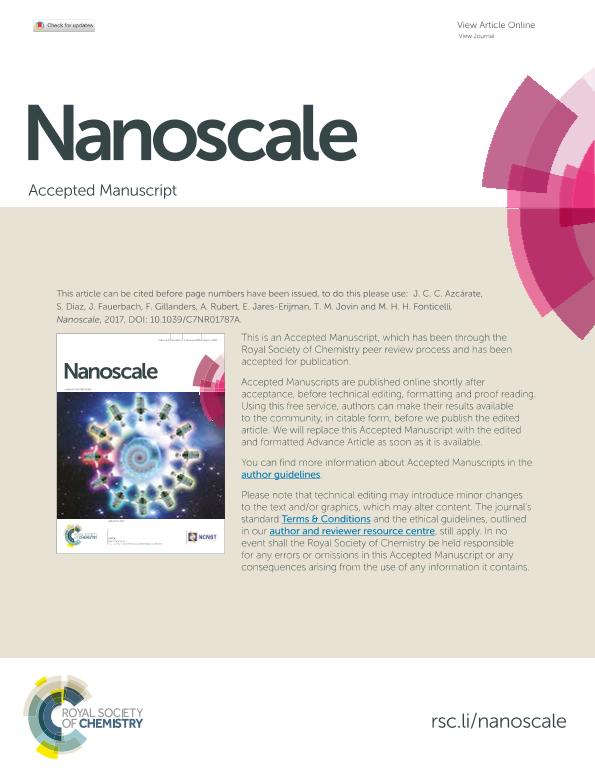Artículo
ESIPT and FRET probes for monitoring nanoparticle polymer coating stability
Azcárate, Julio César ; Diaz, Sebastian Andres; Fauerbach, Jonathan Arturo
; Diaz, Sebastian Andres; Fauerbach, Jonathan Arturo ; Gillanders, Florencia
; Gillanders, Florencia ; Rubert, Aldo Alberto
; Rubert, Aldo Alberto ; Jares, Elizabeth Andrea
; Jares, Elizabeth Andrea ; Jovin, Thomas M.; Fonticelli, Mariano Hernan
; Jovin, Thomas M.; Fonticelli, Mariano Hernan
 ; Diaz, Sebastian Andres; Fauerbach, Jonathan Arturo
; Diaz, Sebastian Andres; Fauerbach, Jonathan Arturo ; Gillanders, Florencia
; Gillanders, Florencia ; Rubert, Aldo Alberto
; Rubert, Aldo Alberto ; Jares, Elizabeth Andrea
; Jares, Elizabeth Andrea ; Jovin, Thomas M.; Fonticelli, Mariano Hernan
; Jovin, Thomas M.; Fonticelli, Mariano Hernan
Fecha de publicación:
07/2017
Editorial:
Royal Society of Chemistry
Revista:
Nanoscale
ISSN:
2040-3364
Idioma:
Inglés
Tipo de recurso:
Artículo publicado
Clasificación temática:
Resumen
Coating strategies of inorganic nanoparticles (NPs) can provide properties unavailable to the NP core alone, such as targeting, specific sensing, and increased biocompatibility. Non-covalent amphiphilic NP capping polymers function via hydrophobic interactions with surface ligands and are extensively used to transfer NPs to aqueous media. For applications of coated NPs as actuators (sensors, markers, or for drug delivery) in a complex environment, such as biological systems, it is important to achieve a deep understanding of the factors affecting coating stability and behavior. We have designed a system that tests the coating stability of amphiphilic polymers through a simple fluorescent readout using either polarity sensing ESIPT (excited state intramolecular proton transfer) dyes or NP FRET (Förster resonance energy transfer). The stability of the coating was determined in response to changes in polarity, pH and ionic strength in the medium. Using the ESIPT system we observed linear changes in signal up to ∼20-25% v/v of co-solvent addition, constituting a break point. Based on such data, we propose a model for coating instability and the important adjustable parameters, such as the electrical charge distribution. FRET data provided confirmatory evidence for the model. The ESIPT dyes and FRET based methods represent new, simple tools for testing NP coating stability in complex environments.
Palabras clave:
Tem
,
Nanoparticles
,
Coalescence
,
Thiols
Archivos asociados
Licencia
Identificadores
Colecciones
Articulos(CCT - PATAGONIA NORTE)
Articulos de CTRO.CIENTIFICO TECNOL.CONICET - PATAGONIA NORTE
Articulos de CTRO.CIENTIFICO TECNOL.CONICET - PATAGONIA NORTE
Articulos(INIFTA)
Articulos de INST.DE INV.FISICOQUIMICAS TEORICAS Y APLIC.
Articulos de INST.DE INV.FISICOQUIMICAS TEORICAS Y APLIC.
Citación
Azcárate, Julio César; Diaz, Sebastian Andres; Fauerbach, Jonathan Arturo; Gillanders, Florencia; Rubert, Aldo Alberto; et al.; ESIPT and FRET probes for monitoring nanoparticle polymer coating stability; Royal Society of Chemistry; Nanoscale; 9; 25; 7-2017; 8647-8656
Compartir
Altmétricas



